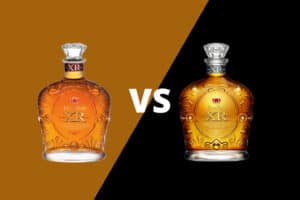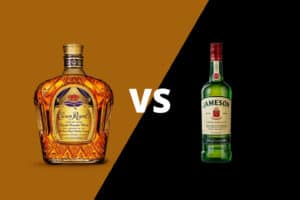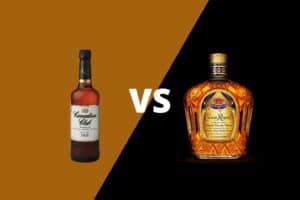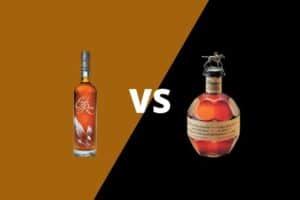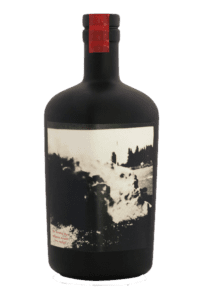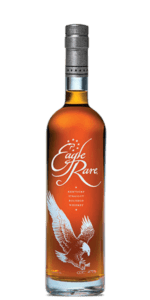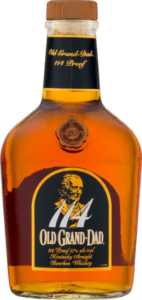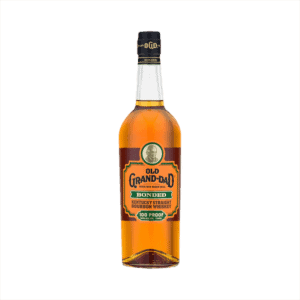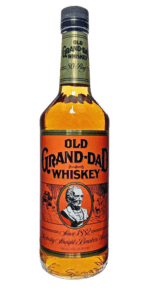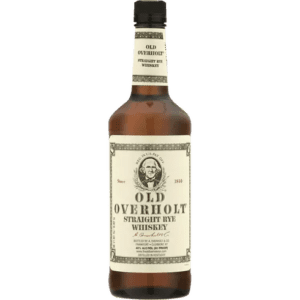This Week
Following our fascination with the history of The Street (last week) we have two pieces from the archives. Coincidentally, they’re both from the News of the World (and, you might think, about time, too).
Former librarian David Webb delved into the old files on a quiet night and uncovered a murder story from 1930 that, these days, would make a TV movie. (It may be necessary to explain to younger readers what a newspaper library is, or was – what it wasn’t, was Google.)
And Roy Stockdill recalls the Bouverie Street days before Rupert Murdoch when the Screws was being folded into the Sunday Times for discreet reading and, while you couldn’t find anybody who admitted to buying it, still managed to sell EIGHT MILLION copies every issue…
Those were the days, my friends…
AND we have two more tributes to Stanley Blenkinsop. Derek Hornby remembers the Stan the Reporter and Clive Crickmer, working against him in the north-east, recalls Stan the Man. These contributions have been added to the memorial on the Blenkinsop Memorial Page. As Stanley was an original (pre-launch) supporter of the Ranters project, we’ll leave it there for some time, for the benefit of old friends who may be on holiday or simply slow on the uptake…
#
Caught by the slip
By David J Webb.
It was with sadness that I read of the demise of the reference library at News International. I hope that all the records will be preserved. There are newspaper cuttings, books and volumes spanning over a century. The work and dedication this represents deserve recognition and preservation.
When I read the announcement in the Guardian and Private Eye it took my mind back to some of the fascinating files that this library contained.
I remember in particular working the late shift one Saturday evening in Bouverie Street. The shift started at 5 pm and finished at 4am on Sunday.
Generally, the evenings were quiet with little happening in the way of telephone enquiries. Some members of staff would ask the switchboard to divert the library calls to the news desk after 10pm where they would spend the evening playing cards and drinking whisky.
As I am a lousy card player and hate whisky my evenings were spent in the library delving into ancient files.
One particular evening I managed to open a battered filing cabinet that had not seen the light of day for years. What I found kept me engrossed for far longer than my 4 am finishing time.
There were some old staff photographs – some I recognised. Others I had no recognition of at all.
What really grabbed my attention however was a battered black diary within an envelope labeled Dr. BUCK RUXTON. 1936. It was addressed to the then News of the World editor Major D Percy Davies.
On examining the pages I discovered handwritten letters from Dr. Ruxton sent from Strangeways Prison pleading his innocence of murder.
At this point I decided to investigate the cuttings file and – yes, under the Crime section we had a file headed CRIME: MURDER: Ruxton Dr. Buck. As well as torn yellowing cuttings it also contained copy typed by Norman Rae the News of the World crime correspondent.
The story unfolded before me.
It began when two holidaymakers found parcels containing dismembered bodies under Devil’s Bridge at Moffat, Scotland on September 30, 1934.
In all forty parcels were collected. The parcels contained two heads – flayed and toothless. Hands and feet – with the nails removed. Arms and legs – with the shins removed. It was also believed the bodies were of a man and a woman.
At the News of the World offices in Bouverie Street investigations were being made for any man and woman reported missing.
Norman Rae gives a very graphic description of how he filled up his sports car and spare petrol tank and headed up the Great North Road for Scotland. After a hearty breakfast of porridge and cream, he met the police at the scene of the crime.
One of the parcels that contained ahead was wrapped in newspaper. The newspaper covered a story and pictures of a beauty contest.
Norman Rae suggested to the police officer that the newspaper – the Graphic – should be submitted to their circulation department as it was possibly a slip edition. [A slip edition was a special edition printed for certain regions in order to promote and report local interest.]
The paper was indeed a slip edition and circulated in the Morecambe and Lancaster area.
Immediately searches were being made throughout the area for a missing man and woman.
Norman Rae was then contacted by a Blackpool correspondent who told him that there were rumors that the wife of a Parsee doctor and her maidservant had disappeared from the doctor’s home in Lancaster. The name of the doctor was Buck Ruxton.
This was the only report of two missing persons from the same area – and although it was not of a man and a woman it was the same area as the newspaper which was wrapped around the victim’s head.
Feigning indignation Norman Rae let it be known to the press pack at the hotel in which they were staying in Moffatt that his editor had called him back to London.
Instead of heading for London Rae went to Lancaster to make enquiries about the doctor who had a home in Dalton Square. Stories of rows and of police intervention were revealed and even rumors that Ruxton had threatened to murder his wife on a number of occasions.
He went to see Ruxton who told him that his wife and maidservant Mary Rogerson had gone away to Scotland.
Meanwhile, the police, acting on Rae’s clue of the torn newspaper, had discovered that on the list of regular customers buying the Graphic in Lancaster was a Dr. Buck Ruxton. Pathologists were also now certain that the ravine remains were not of a man and a woman but of two women.
A fingerprint expert was faced with the task of securing prints from fingers that had been flayed. Prints secured from various articles in the Ruxton home were found to be identical with those he had taken from the fingers and palms of the bodies.
Rae was convinced that Ruxton had failed to destroy the bodies by fire and so decided to take the dismembered bodies and dump them at Moffatt. To test this theory he drove from Lancaster to Moffatt and back again. A feat he accomplished easily before dawn.
Rae visited Ruxton for the last time as a free man. He was pacing up and down in his home and said to Rae: ‘They are saying dreadful things. Tell everybody I am not guilty. Tell them. Tell them all. I did not kill my Belle. I tell you she has gone away. Please! Please tell the world I am not guilty. I love her too much to harm her.’
It was this outburst that convinced Rae that Ruxton was guilty.
The police station was opposite Ruxton’s home and surgery. The chief constable who could see into Ruxton’s home rang him and said ‘I have been thinking about the disclaimer you were asking me to send to the press. Maybe you would like to step across and talk about it.’
Believing he was clear of suspicion the doctor walked into the police station only to find half a dozen officers waiting for him. He was then charged with double murder.
Ruxton was defended by Sir Norman Birkett KC. It was the stormiest murder trial Rae had listened to. At times Ruxton screamed and raved. The court expected a violent outburst as Mr. Justice Singleton passed the sentence of death. However, Ruxton was unmoved. He glanced quickly at the clock and walked from the court.
During his trial, Ruxton wrote many letters to the News of the World protesting his innocence.
After the execution, Rae made his way back to Bouverie Street where, in the editor’s office, they opened a final sealed envelope with instructions that it was not to be opened till after his death.
I turned the last page of the diary and read the same letter.
‘I killed Mrs. Ruxton in a fit of temper because I thought she had been with a man. I was mad at the time. Mary Rogerson was present at the time. I had to kill her.’
Why did he confess after so many denials?
Rae believed it is because he once told him he ‘would never die with a lie on my lips.’
What will happen to the black diary containing these letters – and to other, similar, historic documents – now the library is too close?
Will the faceless tech’s and time and motion nerds try and digitalise them and chuck them on a skip? They probably will not even give it a second glance.
I hope I am wrong.
#
Life before Rupert
By Roy Stockdill
I joined the News of the World, initially as a temporary holiday relief reporter before being given a permanent job, in the Year of Our Lord 1967, or 2BRM – Before Rupert Murdoch, that is.
Previously, I had worked for two years on a long-forgotten newspaper called the Sunday Citizen which closed down that same year. The Citizen, a left-wing paper owned by the Co-operative movement and published from offices in Gray’s Inn Road, near King’s Cross station, had existed since the mid-19th century as a broadsheet called Reynold’s News and had been relaunched, unsuccessfully, as a tabloid in 1962.
Reynold’s News, a revolutionary publication that managed to survive for well over a century when the revolution in Britain was mostly unfashionable, had the distinction of once describing Queen Victoria as ‘a fat German sausage’.
But to get back to the NoW, getting a job in Bouverie Street in the heart of THE Street, after languishing in a King’s Cross backwater, was a heady experience for an ambitious young reporter – especially as in those days the paper was a totally different animal from the red-top, the showbiz-obsessed tabloid of today.
For one thing, it was a somewhat old-fashioned broadsheet, with a lovely, scroll-type masthead and the slogan ‘All Human Life Is Here’ at the head of the front page.
The staple diet was sex and many pages were filled with reports of rape cases and similar events from provincial assize courts. I spent much of my life sitting in court in places like Hertford, Winchester, and Lewes.
Invariably, the bald, formal reports of what was said by witnesses and barristers were enlivened by imaginative sub-editors and defendants were frequently described as monsters and fiends.
I recall one memorable line in a rape case that ran: ‘And there, in a verdant glade alive with birdsong, the monster slaked his insatiable lust’. Not the sort of thing you could get away with in these politically correct times.
But this formula had produced a mammoth circulation of more than eight million in the 1950s and it was said that the NoW was read in many top people’s homes, usually hidden inside a copy of one of the heavies.
However, the principal feature of the NoW, in those days before anyone had heard the name Rupert Murdoch, was that the newspaper was run virtually as a medieval fiefdom by the Carr family.
Henry Lascelles Carr had bought the paper in 1891 and his nephew, Sir Emsley Carr, was an editor for 50 years. His name was still commemorated long after his death in an athletics race called the Emsley Carr Mile.
When I joined the paper, the chairman was an eccentric and amiable character called Sir William Carr, great-nephew of Henry Lascelles and son of Sir Emsley. ‘Bill’ Carr, as he was known to all and sundry, was basically a shy man, a trait which he disguised with an outward air of bonhomie, social indulgence, and sometimes downright rudeness.
He headed the company for 17 years from 1952 until 1969 when Murdoch arrived, and, as it turned out, Bill Carr was the last of the family dynasty to preside in Bouverie Street.
He was a businessman, never a journalist like his father, and was said to be a brilliant mathematician who could do complicated sums on the back of a cigarette packet. But that was before lunch.
Carr was a connoisseur of Scotch whisky and maintained his expertise by rarely drinking less than two bottles a day. He was fond of long well-lubricated lunches at the Savoy Grill, which was known in the office as the directors’ canteen. He was also an inveterate gambler, winning or losing thousands at the roulette table, and played backgammon with Lord Lucan at John Aspinall’s Clermont Club in Grosvenor Square.
Carr loved the kudos of being chairman of the world’s largest-selling Sunday paper and ran the NoW like a family grocery store, treating the staff like old family retainers. Hardly anybody ever got fired and once a year they all trooped with wives, husbands and sweethearts down to the palatial Carr home in Sussex, where they lined up to be introduced to Sir William and Lady Carr, played croquet and were served strawberries and champagne by flunkies in tails.
Another annual bash for editorial staff was called the Leg o’ Mutton Supper. This was a strictly stag affair, and inevitably developed into a long, riotous evening. At one of these functions a show business writer, well in his cups, found himself in conversation with the chairman.
No-one knew what brought it on, but the reporter gripped Carr fiercely by the tie and uttered the interesting question: ‘What makes you so f ***ing rich when I’m so f ***ing poor?’
Next day the poor fellow arrived at the office and, with a vague recollection of what he’d done the night before, expected to be told to pick up his cards. He got into the lift and found himself sharing it with Sir William, who regarded him sorrowfully, shook his head and observed: ‘Oh, the silly things we do and say at times.’ And no more was ever said about the incident.
Carr always liked to do things in style and believed his newspaper should do the same. Like the day he instructed the Falstaffian editor Stafford Somerfield to hire a ship to take competition winners on a cruise. ‘I thought he meant a boat on the river,’ Somerfield wrote in his memoirs. ‘But, no, he meant the Queen Mary!’
Cunard were somewhat surprised to be asked if a Sunday newspaper could hire their famous liner, but they obliged. So the News of the World took 1,000 readers to Las Palmas for Christmas, competition winners being allowed to take their families – one family totaled 14.
Carr and Somerfield joined their faithful readers on the cruise and Carr insisted on meeting as many of them as possible, so the cocktail parties started at 10.30 am and went on all day.
Also on the trip was one of Carr’s numerous sporting pals, snooker ace Joe Davis, whose trousers fell down on the dance floor and a thoroughly good time was had by all. How much it all cost was never revealed.
In addition to his drinking and gambling, Carr was a fanatical golfer and actually had his own club, Walton Heath, which had been in the ownership of the News of the World for many years. One of the many sporting buddies he hired to write for the paper was Henry Cotton, one of the game’s all time-greats.
Cotton, though a golfing genius, was something of an eccentric and a mystery to the NoW sports department when writing about the game. His copy was always handwritten in green ink, usually on the notepaper of whichever luxury hotel he happened to be staying in. On occasions, the great man’s dispatch would arrive on small, oblong sheets of thin card, which turned out to be dividers from packets of Shredded Wheat.
Henry Cotton suffered from the delusion that everybody moved in the same exalted circles as he did and would frequently phone the NoW sports department and asked a bemused young reporter: ‘Seen Bill this morning?’
Bill Carr also loved motor cars and bought Rolls Royces for the Carr family and senior executives as if they were Ford Prefects. Hedda Hopper, the American columnist, and socialite, got one in part payment for extracts from her autobiography.
She had lunched with Carr and chided him over the payment she’d received. Next day a Rolls was left for her outside her hotel, Dorchester. ‘It was the most handsome bonus I ever received,’ said a surprised Hopper.
Once Stafford Somerfield drove his office Jaguar home, in the days before the breathalyzer, and found it gone the next morning. Assuming it had been stolen, he duly reported the loss to Bill Carr, whose response was: ‘Well, go and get yourself another one.’ Sometime later Somerfield’s neighbour, who had been out of the country, discovered the ‘stolen’ Jaguar in his garage.
Some of Sir William’s worst decisions invariably made after a liquid lunch, cost the newspaper a great deal of money. In 1967, the year I arrived in Bouverie Street, he made a drunken bet with his great rival, Sir Max Aitken, chairman of the Express Group, that he could build a powerboat that would win the Daily Express Cowes to Torquay race.
Nobody could talk him out of it, so a top designer and boatyard were hired to build the craft at a cost of £100,000. Disaster inevitably ensued. The boat failed to finish the race and in only its second appearance it exploded into flames and sank beneath the waves off Portland Bill.
I was in the newsroom when news of the accident came through. I can still recall the late Bob Warren, who went on to become a News of the World legend, picking up a telephone on the newsdesk, listening for a moment and then calmly announcing: ‘Our boat has just blown up.’
Another of Sir William’s gaffes occurred during a reception and dinner for competitors and delegates to the British Games, a big athletics meeting that the NoW promoted. It should be mentioned here that Carr’s views on race – the ethnic type, not running – would have raised more than a few eyebrows today.
After eating little and drinking a lot, he came up with the idea that a challenge match should be arranged with white athletes pitted against black ones. The guest of honour, who happened to be the chief of police from Jamaica, didn’t share his view but Carr insisted that it would be an interesting and entertaining spectacle.
Fortunately, it turned out to be one of the very rare occasions when the chairman backed down, for next day his executives, as well as the paper’s athletics writer and former mile champion Doug Wilson, managed to convince him the idea was a non-starter.
Earlier, in the 1950s, the newspaper – always famous for its sports coverage – had bought a couple of racehorses and invited readers to name them. Ten thousand replies poured in and the nags were named Paper Boy and Misprint. But despite being trained by racing legend Sir Gordon Richards and having top jockey Scobie Breasley aboard, they never earned their oats.
It was somewhat embarrassing for the paper, as so many readers had their money on them that the horses usually started as favorites. A hapless hack who had been deputed to follow the nags’ careers, having told readers to back them, once started his column with: ‘Sometimes it is difficult to know what to write!’
Under Bill Carr’s chairmanship, the NoW went sponsorship-crazy, for Carr believed it was all great publicity and brought in bags of reader goodwill.
The paper sponsored darts, golf and athletics tournaments, as well as the annual El Alamein Reunion, a huge event at the Royal Albert Hall with Vera Lynn ever-present, also for a time the Miss World contest.
However, literally, scores of ‘tiddler’ events up and down the country were taken under the newspaper’s sponsorship wing. There were giant leek contests, flower and vegetable shows, a town criers’ championship, crown green bowling matches, a rowing regatta on the Serpentine, pigeon, and greyhound racing, small-bore rifle shooting at Bisley, old-time dancing competitions at Butlin’s, and a huge star gala in Battersea Park.
What the paper decided to sponsor frequently depended on who Bill Carr had had lunch with – and it all came to an end with the arrival in 1969 of Rupert Murdoch.
One of Murdoch’s first acts was to sell Walton Heath Golf Club, while Bill Carr stepped down as chairman and became Life President of the company.
Stafford Somerfield didn’t survive long as an editor, either. He was sacked by Murdoch in a three-minute interview in February 1970, which inspired a friend, another fired editor, to send Somerfield a telegram asking: ‘Why did it take three minutes, you talkative bastard?’
Somerfield went off to indulge in his other passion, breeding pedigree dogs. He also wrote a column for Dogs’ World, which inspired a wit in the Guardian to dub the paper ‘Woofs of the World’.
My own view? Well, under Murdoch the whole operation became more professional and the editorial staff certainly earned more money. But it was hardly as much fun as under the eccentric, paternalistic Carr regime – and the paper never again reached the giddy heights of an eight million-plus circulation.
Some of this material originally appeared in The News of the World Story by Cyril Bainbridge and Roy Stockdill, a paperback published in 1993 to mark the paper’s 150th anniversary.
###
















